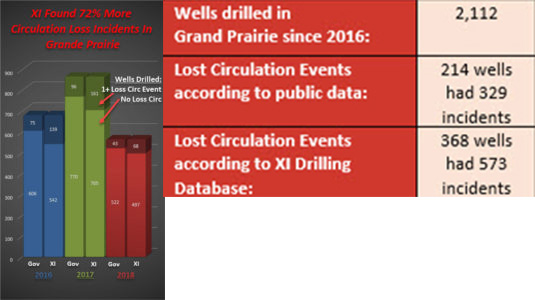Word to the Wise: How to manage drilling budgets, mitigate risks, and reduce NPT
September 17, 2019
It’s no secret that drilling activity throughout the Western Canadian Sedimentary Basin (WCSB) is down and has been for a few years now. But that doesn’t mean that companies aren’t drilling at all. What it does mean is that companies that are continuing to drill need to ensure they are achieving optimum effectiveness from their drilling programs.
This week, our Wednesday Word to the Wise looks at how data can help drive improvements in your drilling program. If you’d like to receive our weekly blog in your inbox before anyone else, subscribe here.
As the industry moves into planning season, the ability to maximize the ROI of drilling budgets is as important as it’s ever been. This is best done by managing drilling risks and reducing non-productive time (NPT). Research is critical to executing a successful drill program. For those who know how to ask the right questions, a wealth of knowledge is available to reduce costs, avoid problems, and drill high quality wells.
To manage drilling risk and reduce NPT, you need to be aware of past problems. For example, a major circulation loss on a single well can negate the efficiency gains of an entire drill program and cost your company hundreds of thousands of dollars. But, as in many situations, you don’t know what you don’t know until it’s too late. Researching historical incidents is the best way to avoid future risk, but how do you know you’ve got the right intel on which to base your decisions? In 2018, XI published a case study on how to use drilling tour data to cut drilling time and costs in the WCSB. The document is available for free download here.
AER’s mandate to collect and disseminate well incident information is certainly an important source that is vital to problem avoidance when planning future drill programs. But, without specific standards defining what is a “reportable incident”, a level of subjectivity is applied in the data submission process after a well is drilled. This naturally results in a gap between the public record of circulation losses and the number of incidents that have actually happened.
Thankfully, there is another source to help supplement your knowledge. By employing XI’s TourXchange drilling database and the specialized data mining capabilities of XI’s Offset Analyst software, you can close the information gap and raise awareness about areas/formations that are prone to losses. With this added knowledge, you can:
- Reduce your probability of encountering future incidents.
- Better plan and prepare for potential problems.
- Enhance the reliability/consistency of your drill program.
- Approach innovation and optimization with less risk.
Example: How many Grand Prairie wells experienced circulation losses?
As an example of an issue that becomes apparent using the data available in Offset Analyst, we ran a quick comparison on Grande Prairie drilling over the last three years.

Armed with information like this, operators looking to drill in the area would then dig deeper into analogous offset wells in order to determine the magnitude of the circulation loss, as well as the depth and conditions under which it is most likely to occur. This allows the drilling engineer to plan ahead, making adjustments to the drill plan in an effort to proactively prevent the circulation loss. Advance intel also helps with budgeting for and ordering loss mitigation materials for the site, another way to manage budget.
For a more in-depth look at Offset Analyst book a personalized demo, or contact XI Sales.
